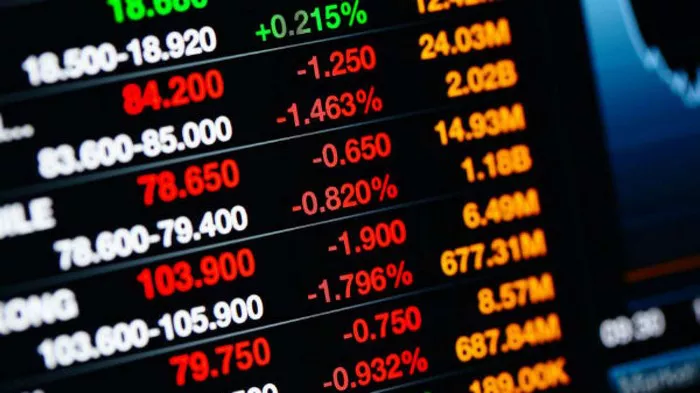Embarking on the journey of trading futures necessitates a thoughtful consideration of capital requirements. The allure of futures markets lies in their potential for profit, but understanding how much capital is needed is a crucial aspect of successful trading. In this article, we will explore the factors influencing the amount of money required to trade futures, addressing considerations such as market volatility, risk management, and the trader’s individual goals and strategies.
Assessing Market Volatility in Futures Trading
Futures markets are renowned for their inherent volatility, offering both opportunities and risks for traders. The level of volatility varies across different futures contracts, with commodities like gold and oil often exhibiting higher volatility compared to financial instruments like stock index futures. Traders must assess the volatility of the specific futures markets they intend to trade as it directly impacts the amount of capital needed. Higher volatility may require a larger capital buffer to accommodate price swings and implement effective risk management strategies.
Risk Management and Capital Allocation
Effective risk management is a cornerstone of successful futures trading. Traders need to determine the amount of capital they are willing to risk on each trade and set appropriate stop-loss levels. The risk per trade is typically expressed as a percentage of the trading capital, with common recommendations ranging from 1% to 3%. By defining and adhering to risk parameters, traders can protect their capital from substantial losses and ensure longevity in the dynamic world of futures trading.
Leverage and Margin Requirements in Futures Trading
Leverage is a characteristic feature of futures markets, enabling traders to control larger positions with a fraction of the total value. While leverage magnifies potential profits, it also increases the risk of significant losses. Margin requirements, the amount of money a trader must maintain in their account to open and hold a position, play a crucial role in determining the leverage available. Understanding the relationship between leverage, margin, and capital is essential for traders to navigate futures markets effectively.
See Also: What happens when commodity futures expire?
Diversification and Capital Efficiency
Diversifying across different futures contracts can be a strategic approach to optimize capital efficiency. Rather than concentrating capital on a single contract, diversification spreads risk across multiple assets, potentially mitigating the impact of adverse price movements in one market. However, it’s important to strike a balance; over-diversification can dilute the impact of successful trades. Traders should carefully select a mix of futures contracts that align with their risk tolerance, market knowledge, and overall trading strategy.
Choosing the Right Contract Size and Market
The size of the futures contract traded directly influences the capital required for each position. Futures contracts come in various sizes, and understanding the notional value of a contract is crucial for determining the financial commitment. For example, trading a standard E-mini S&P 500 futures contract involves a different capital requirement than trading a micro-sized S&P 500 futures contract. Traders should carefully select the contract size that aligns with their risk tolerance and capital availability.
Micro and Mini Contracts for Limited Capital
For traders with limited capital, the availability of micro and mini futures contracts is a game-changer. These scaled-down contracts provide an avenue to access futures markets with a fraction of the capital required for standard contracts. Micro and mini contracts are available across various asset classes, including stock indices, commodities, and currencies, allowing traders to tailor their positions to their specific capital constraints while still participating in the dynamic world of futures trading.
Simulated Trading for Skill Development
Before committing real capital, novice traders or those with limited resources can benefit from simulated or paper trading. Simulated trading platforms allow traders to practice their strategies in a risk-free environment using virtual money. This approach provides an opportunity to refine trading skills, test strategies, and gain confidence without the fear of financial loss. Simulated trading can be an invaluable tool for skill development and strategy optimization, paving the way for more informed decision-making in live futures trading.
Education and Continuous Learning
An investment in education is an investment in trading success. Traders should allocate resources to enhance their knowledge of futures markets, technical and fundamental analysis, and trading strategies. Numerous online courses, webinars, and educational platforms offer valuable insights into the intricacies of futures trading. Continuous learning not only improves decision-making but also equips traders to adapt to evolving market conditions, enhancing their overall effectiveness in futures trading.
Accounting for Trading Costs
In addition to the capital required for positions, traders must account for trading costs, including commissions, fees, and slippage. These costs can have a significant impact on overall profitability, especially for high-frequency or day traders. Calculating and factoring in trading costs when determining position sizes and risk per trade is essential for accurate financial planning and ensuring that the capital allocated aligns with realistic profit expectations.
Scaling Positions with Growing Capital
As traders gain experience and accumulate profits, they may consider scaling their positions to align with the growing capital base. Scaling allows for larger position sizes while maintaining a consistent risk per trade. However, scaling should be approached cautiously, with a keen awareness of the potential impact on risk and volatility. Traders should reassess their risk management strategies and adjust position sizes accordingly to accommodate the changing dynamics of their trading portfolio.
Conclusion
In conclusion, the amount of money needed to trade futures is a multifaceted consideration influenced by market volatility, risk management practices, leverage, and individual trading goals. While there is no one-size-fits-all answer, traders can navigate the complexities of futures markets by carefully assessing their risk tolerance, diversifying effectively, and utilizing the array of contract sizes available. Whether trading micro contracts, engaging in simulated trading for skill development, or continuously educating oneself, the key lies in a thoughtful and strategic approach to align capital with the dynamic nature of futures trading.


